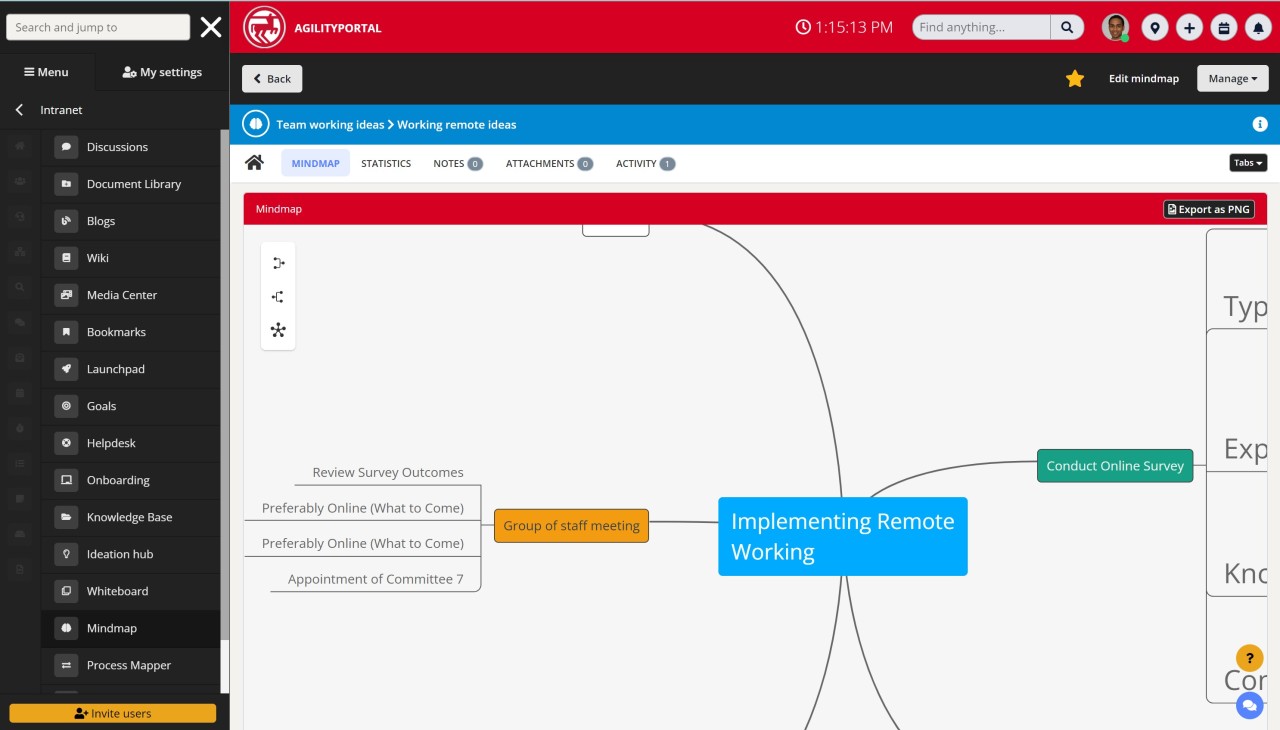Insight Blog
Agility’s perspectives on transforming the employee's experience throughout remote transformation using connected enterprise tools.
6 minutes reading time
(1159 words)
Featured
Social Media Recruitment: How to Design an Efficient Strategy for Your Company
Craft a strategic vision or mission statement to guide all other strategic decisions. So How do you Design an Efficient Strategy for Your Company?
Publishing a static job post is no longer the best way to attract top talent to your company. As social media and brand transparency have become such a normalized part of daily life, it makes sense that creating a social media recruitment strategy is the modern best practice.
Still, publishing the same static job post on social media isn't the answer. Here's how to design an effective social media recruitment strategy for your company.
Clarify Your Brand
First, take some time to revisit your brand and clarify what tone and atmosphere you want to communicate to job seekers. One of the first things CV writers will do when putting together an application will be to research your brand. This process could primarily include an in-depth social media deep dive. It may also include time spent on Google looking for news stories and reviews.
Consider adjectives that speak to your overall company culture. Are you fun and vibrant or streamlined and professional? Are you edgy and energetic or calm and collaborative?
Clarifying these brand elements as it pertains to potential employees will help you craft content that resonates with the right candidates.
The goal isn't to amass a huge following; it's to find a few people with the right skills and fit for your business.
Here are a few examples:
- Define your audience. Who are you trying to reach with your brand? Knowing your target market will help you focus your messaging and make it more effective.
- Know your competition. What sets you apart from other businesses in your industry? This will help you develop a unique selling proposition that will attract attention.
- Keep it simple. Don't try to be everything to everyone - focus on what you do best and make that the cornerstone of your brand.
- Be consistent. Make sure all of your marketing materials reflect your brand in the same way, so there is no confusion about what you stand for.
- Get feedback. Ask customers and employees what they think of your brand, and use their input to fine-tune your message.
Choose the Right Platforms and Formats
When most people consider recruitment via social media, LinkedIn is top-of-mind. While LinkedIn certainly has merit as the leading professional and work-oriented platform, it's not the only avenue to pursue.
Consider your ideal candidate as you would explore your customer demographics. Consider what type of content they enjoy and what platforms they use. Then, consider the best strategy for creating content for that platform.
For example, many brands are now using TikTok for recruiting. TikTok recently released a TikTok Resume campaign that encourages job seekers to create a 60-second video highlighting their experience and skills. These videos can be used to apply for a job posting.
Many brands also use Instagram, both with static posts and Reels. This visually-driven platform is ideal for companies with strong visual elements and branding. Twitter, YouTube, Facebook— there's no single answer to which platform is best. It ultimately depends on where your ideal candidates are hanging out.
Few other examples:
- LinkedIn – LinkedIn is a great platform for connect with professionals in your industry and build your network. You can also use LinkedIn to post job listings and search for potential candidates.
- Twitter – Twitter is a great way to reach out to potential candidates and promote your open positions. You can also use Twitter to build relationships with influencers in your industry and get your brand in front of a larger audience.
- Facebook – Facebook can be used to post job listings and target potential candidates with ads. You can also use Facebook to connect with groups and individuals who might be interested in your open positions.
- Instagram – Instagram is a visual platform that can be used to showcase your company culture and attract top talent. You can also use Instagram to share open positions and drive traffic to your careers page.
- TikTok – TikTok is a great platform for connecting with professionals in your industry and sharing content related to your open positions. You can also use TikTok to target potential candidates with ads and build relationships with influencers in your industry.
Streamline Your Processes
As you explore this new avenue, it's wise to re-evaluate your hiring processes. Having a streamlined application and hiring process increases employee satisfaction and reduces turnover. One of the most frustrating aspects of applying for a job is being required to fill out an online form with all the pertinent details, then attach a physical resume.
Consider how social media fits into your hiring funnel and whether you'll have different application portals available. In other words, will you review applications on each platform or have a singular link to include across the various platforms?
You'll also need to consider a response plan for when people ask questions or send DMs to your brand's social media accounts. Creating automated responses or a "cheat sheet" based on FAQs for your team to answer could help improve engagement.
Utilise social intranet platform to collaborate with employees on the process such as AgilityPortal's Mindmap.
Create Employee Guidelines
Your employees are your best brand ambassadors. You likely have a social media usage policy in place, but do you have guidelines around sharing job openings?
Consider creating clear guidelines for employees to share job-related content. You can also create a referral program, using a referral code system to track and reward employees for their efforts in finding qualified candidates. Employee referrals typically lead to better retention and hiring quality while cutting recruitment costs. Of course, cultivating a healthy company culture and rewarding employees for their efforts is a must for capitalizing on these efforts.
Highlight Company Perks
Most social media strategies are product-focused. In other words, your social media content is likely targeted at customers without showcasing what happens behind the scenes.
Create a strategy that shows what it's like to work at your company. Highlight behind-the-scenes activities, showcase your employees at work, and give viewers a taste of life at your organization. Many brands opt for a separate brand account for this purpose, so their feed doesn't become convoluted. This approach also helps facilitate an evergreen social media recruitment strategy.
Add Strong CTAs
Finally, be crystal clear on the action you expect applicants to take after applying. Add a CTA to each post that encourages candidates to submit their applications.
In essence, creating a social media recruitment strategy is parallel to creating a customer-centric brand strategy— except the product you're selling is employment. Keep these key considerations in mind to create an effective strategy that attracts top talent.
Categories
Blog
(2618)
Business Management
(320)
Employee Engagement
(210)
Digital Transformation
(174)
Growth
(119)
Intranets
(119)
Remote Work
(61)
Sales
(48)
Collaboration
(37)
Culture
(29)
Project management
(29)
Customer Experience
(26)
Knowledge Management
(21)
Leadership
(20)
Comparisons
(6)
News
(1)
Ready to learn more? 👍
One platform to optimize, manage and track all of your teams. Your new digital workplace is a click away. 🚀
Free for 14 days, no credit card required.
















